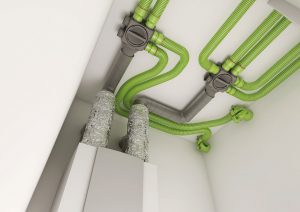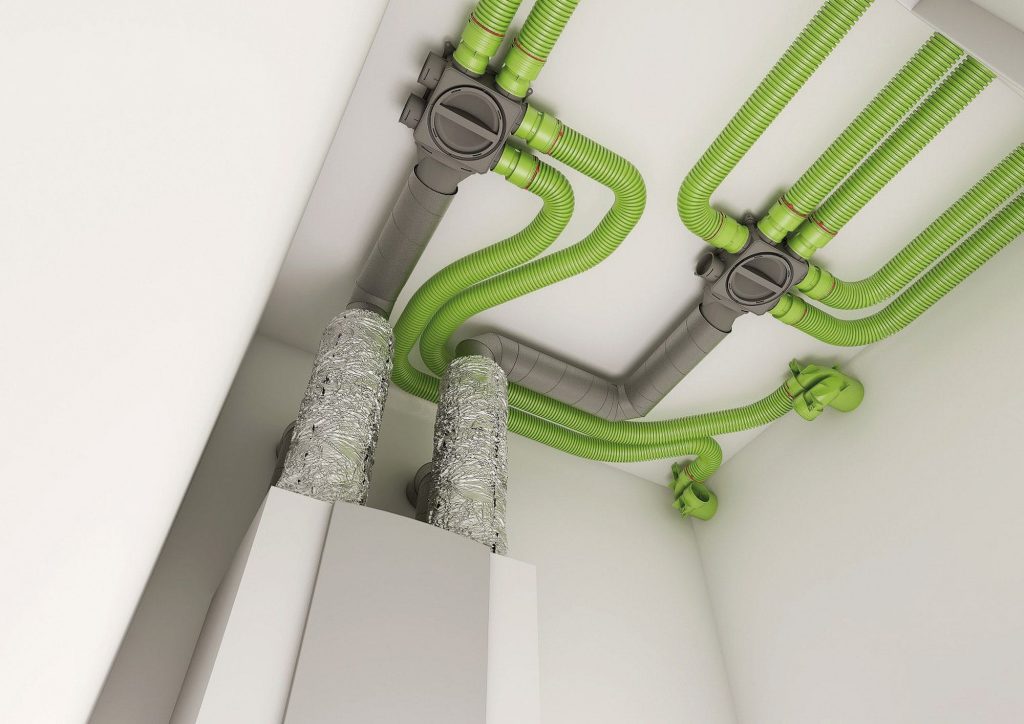Advantages of an MVHR System
 MVHR systems are based on the principle of transfer, supply and extraction zones. A heat exchanger is the heart of the system. The units have ducts leading to different rooms, which allow for a constant flow of air. Inhabitable rooms receive fresh air, while wet rooms and kitchens are continuously extracted.
MVHR systems are based on the principle of transfer, supply and extraction zones. A heat exchanger is the heart of the system. The units have ducts leading to different rooms, which allow for a constant flow of air. Inhabitable rooms receive fresh air, while wet rooms and kitchens are continuously extracted.
A heat exchanger is then used to move the warm air back into the house. MVHR units are not just a great option for saving energy, but they are also very affordable.
To get the most value from MVHR, it’s important to consider a few important points.
3 Steps to installing a MVHR system
- First, make sure that the unit can be easily accessed. It should not have to balance itself on ceiling joists. In addition, there should be 500mm maintenance space in front of it.
- Second, it should be installed in a central location. This reduces the need for long duct runs. You can place it within the thermal envelope of a building, but it’s best to place it close to an external wall. This will ensure that the intake and exhaust ducts are short.
- Third, MVHR improves indoor air quality. It’s important to make sure that the building’s envelope is airtight. If it’s not, the MVHR system will be inefficient at controlling the temperature in the home. This is because the moisture in the air will be removed from the wet areas, and the heat will be passed onto a new supply of air.
Furthermore, the heat recovered will be transferred to the new supply of filtered air.
An MVHR system can help you reduce your energy bills by up to 50%
MVHR is one of the most effective ways to improve the quality of air inside a home. The MVHR system can help you reduce your energy bills by up to 50%. This means that you can save a lot of money on your energy bills and avoid buying a new boiler or furnace. The more airtight your house is, the more effective it is. However, it isn’t always a simple process.
MVHR systems are separate from your heating system and are usually installed in the basement or loft. Unlike conventional heating systems, MVHR systems can be used year-round as a standalone system. During the winter, MVHR systems can increase their efficiency by up to 10%. They are also silent. In fact, MVHR units can improve the standard of living in a home by up to 40%. They can be installed in homes of all sizes.
MVHR systems are separate from your heating system and are usually installed in the loft or basement. They have a heat exchanger unit in the utility room or cupboard. Some of them have a manual boost setting and some have automatic settings.
MVHR systems are a smart investment for homes and are ideal for high-performance buildings. They help improve the quality of air inside a home by up to 50%. The efficiency of MVHR units depends on their size and how many units you have in your house.
Reducing levels of CO2, mould spores and dust mites
MVHR is a smart solution for new and old homes. Unlike natural ventilation, MVHR systems help to equalise the temperature of a building by removing stale air. As a result, they can reduce the levels of CO2, mould spores, and dust mites.
The technology is also effective in controlling the humidity level in a home. Despite the fact that MVHR systems are installed in new homes, they are still a great solution for properties of all types.
In a renovation project, MVHR systems can be incorporated into an existing structure. It is most efficient when retrofitted in one-storey dwellings. In a two-storey building, a MVHR system can be installed in the loft area.
If a single-storey building is not possible, a service zone can be created by installing risers through the eaves. The service zone can also be accessed through the in-built wardrobes.




